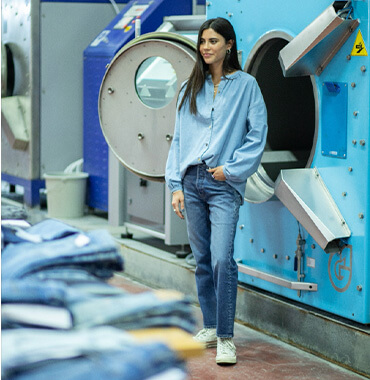Buzzwords To Watch in 2021
2020 was the start of democratizing information in our opaque supply chain. With everyone racing to have the best webinar topics and expert guests, information about the fashion and denim supply chain has become extremely accessible.
2020 was the start of democratizing information in our opaque supply chain. With everyone racing to have the best webinar topics and expert guests, information about the fashion and denim supply chain has become extremely accessible. But, with such accessibility, buzzwords have started spreading like wildfires while the accuracy of the terms is diminished. Much like “sustainability” has come to mean basically anything and everything, there are a few words on the horizon that are at risk of falling under these blanket statement terms in 2021.
Circularity
We are starting to see many brands use the word “circular” in their marketing strategies, yet, in order to achieve full circularity, you need to have a strong relationship with your end-user and reverse logistics in place to successfully cycle products back into the system. This could be a biological or technical cycle depending on how the materials can best be reutilized! There are many approaches to designing for circularity, but the most common approaches are designing for durability, longevity, reparability, disassembly, and recyclability. When designing for longevity, durability, and reparability, we are aiming to extend the use of a garment. On the other hand, when we are designing for disassembly, recyclability, or biodegradability, the goal is to ensure that products and materials return to the system and can be regenerated. Seems fairly straightforward from the outside looking in, but like with most things, there is a complex world behind these processes and necessary logistics. Calik Denim has recently signed the Dutch “Denim Deal” which aims to make textile recycling the new norm. This is an exciting move for Calik’s contribution to the circular economy. When we have the right infrastructure and reverse logistics in place around the globe for garment recycling, we can rightfully call our products, businesses, and economies circular. There must be a true understanding of designing for circularity and how you are going to achieve it before calling yourselves a circular brand. The potential to be recycled does not make something circular!
Transparency / Traceability
With more spare time to read the news headlines, the world has been exposed to the exploitative practices in the supply chain which has resulted in a push from consumers demanding more transparency. However, we have also started to see a push towards traceable garments from the consumer as they become more curious about the process of how clothing is made. Traceability can facilitate transparency and visibility into your supply chain, but the two terms are not interchangeable. Think of traceability like an individual tracker of each step in the supply chain and transparency like an insider view into the map of a company's entire value chain. Circularity also relies on knowing the exact inputs of a product which traceable supply chains help with.
Carbon Positive
We’ve gone from a harm reduction model to striving for a positive impact model within the past year with discussions around using regenerative farming methods to produce our raw materials and finding new ways to sequester carbon from the air. Brands that claim to be carbon neutral have worked on reducing as many emissions as they can within their own supply chain, and offset the rest that they are unable to address themselves. But, turning to carbon offsetting can be dangerous. It fosters an out of sight out of mind mentality by simply paying a fee for carbon credits. We must be careful to give real meaning to Carbon Positive garments that have looked at the entire value chain and lifecycle of a product that truly removes more carbon from the air than it emits.
Zero
We are always striving for Zero. Zero-waste, zero chemicals, zero discharge, zero water used, zero-carbon - the list could go on for any input or output we are talking about. But zero is virtually impossible to achieve. While we want to encourage this race to eradicate all waste, harmful chemicals, or toxic substances, and conserve our natural resources, we must also think about the misleading terms we use to describe our innovative successes. These buzzy words make for great marketing schemes that sound and look great while being concise. But, it is vital that we are giving these terms meaning with proof and the right storytelling to reach the right audience. Don’t hop on the next hot term, just to be in the race towards being the “most sustainable.” Show us how you’re doing it or how you’re going to do it. Here’s to creating value in 2021! Happy New Year Folks :)
To view full content and a better mobile experience, try



